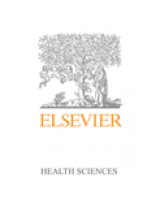New to this edition
- A new editor and contributor team brings in wealth of expertise from across Australia, New Zealand and internationally.
- Two new chapters on Global Reproductive Health and Indigenous Women’s Health place emphasis on the need to adapt women’s healthcare according to various cultural and socioeconomic factors.
- Emphasis on prevention and early diagnosis in obstetric care, with an increasing focus on fetal medicine.
- This edition will be available as an Expert Consult eBook along with the print book. The eBook will include enhancements to the images within the book, as enabled by the Inkling platform.
Author Information
By Michael Permezel, MD MRCP(UK) MRCOG FRANZCOG, Professor of Obstetrics and Gynaecology, Mercy Hospital for Women and University of Melbourne, VIC; Susan Walker, MD DDU CMFM FRANZCOG, Professor of Maternal Fetal Medicine, Director of Perinatal Medicine, Mercy Hospital for Women and University of Melbourne, VIC and Kypros Kyprianou, MBBS, FRACP, Paediatrician, Royal Children’s Hospital, Werribee Mercy Hospital, Epworth Freemasons Hospital and University of Melbourne, Melbourne, Victoria, Australia
Section 1: Anatomy and physiology1 Reproductive anatomy and physiology2 Anatomy and physiology of pregnancySection 2: ObstetricsSection 2.1 Normal pregnancy3 The pre-pregnancy consultation4 The first antenatal visit5 Antenatal care beyond the first antenatal visit6 Nutrition and pharmacy in pregnancy incl vitd, folate, maternal obesitySection 2.2 Problems of early pregnancy7 Hyperemesis gravidarum8 Bleeding in early pregnancySection 2.3 Prenatal diagnosis9 Diagnosis and management of fetal abnormalitiesSection 2.4 Obstetric complications10 Antepartum haemorrhage11 Placental insufficiency and FGR12 Preterm labour and cervical insufficiency13 The post-dates pregnancy and rupture of the membranes before labour at term14 Multiple pregnancy15 MalpresentationSection 2.5 Medical and surgical disorders in pregnancy16 Hypertensive disorders of pregnancy and eclampsia17 Thromboembolism, cardiac disorders and respiratory disease18 Bacterial infections in pregnancy19 Viral infections, protozoan infections and immunisations in pregnancy20 The Blood - anaemia; thrombocytopaenia and coagulopathy21 Gastrointestinal, hepatobiliary, gynaecological and renal problems in pregnancy22 Autoimmune and isoimmune disease in pregnancy23 Diabetes mellitus24 Neurological disorders in pregnancy25 Mental health disorders during the perinatal periodSection 2.6 Common Clinical scenarios and presenting problems in Pregnancy26 Common problems in pregnancySection 2.7 Labour and birthSection 2.7.1 Normal labour and birth27 The physiology of parturition28 Management of normal labourSection 2.7.2 IOL, Instrumental Delivery and Casearean Section29 Induction of labour including cervical ripening30 Episiotomy and vaginal outlet tears31 Instrumental delivery32 Caesarean section and trial of labour after caesareanSection 2.7.3 Intrapartum clinical problems33 Intrapartum fetal compromise34 Failure to progress in labour35 Malpresentation and malposition36 Postpartum haemorrhage37 Maternal collapse38 Obstetric analgesia and anaesthesiaSection 2.7.4 The puerperium and lactation39 The physiology of the puerperium and lactation40 Normal postpartum care41 Puerperal disorders 42 Maternal and perinatal mortality and morbidity and global reproductive health 43 Multicultural issues including indigenous women's health and women's health in other disadvantaged groupsSection 3 GynaecologySection 3.1 Gynaecological assessment44 Gynaecological history and examination45 Gynaecological investigationSection 3.2 Menstrual disorders46 Paediatric and adolescent gynaecology47 The Menstrual cycle and menstrual disordersSection 3.3 Reproductive Endocrinology and Infertility48 Subfertility and reproductive technology49 Amenorrhoea hyperprolactinaemia & ovulation induction50 Androgen excess including PCOS, hirsutism and acneSection 3.4 The menopause51 Menopause climacteric and hormone therapySection 3.5 Sexuality52 Normal sexuality; sexual and marital dysfunction; sexual assaultSection 3.6 Contraception and fertility control53 Contraception and fertility control54 Genital tract infectionsSection 3.7 Urogynaecology55 Pelvic organ prolapse56 Urinary incontinenceSection 3.8 Pelvic pain and endometriosis57 Pelvic pain58 EndometriosisSection 3.9 The breast and gynaecology59 Breast disordersSection 3.10 Neoplasia and other lumps60 Benign and malignant disorders of the vulva and vagina61 Benign and malignant disorders of the cervix62 Benign and malignant disorders of the uterus; the pelvic mass63 Benign and malignant disorders of the ovary and the fallopian tubeSection 4: Neonatology64 Neonatal physiology - adaptation and resuscitation65 Routine neonatal care66 Assessment of the neonate67 Neonatal feeding and nutrition68 Neonatal jaundice69 Neonatal neurological presentations70 Neonatal respiratory distress71 The small for gestational age and large for gestational age neonate72 Neonatal infection73 Congenital malformations74 Neonatal haematology75 The preterm neonate and perinatal transport


